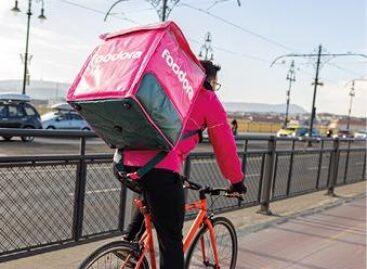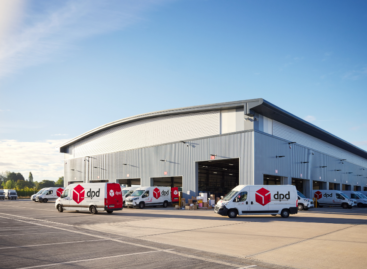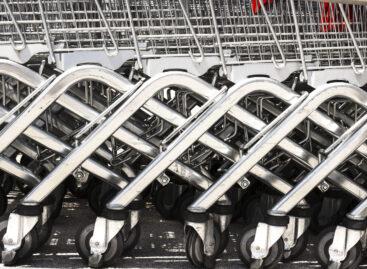On the dot delivery
In a culture of immediacy, logistics must do things in minutes that used to take hours or days.
This article is available for reading in Trade magazin 2025/10.
Next-day delivery (D+1) is now the industry minimum, while order deadlines are being pushed back. The key to operation is real-time inventory visibility, system-level integration (webshop, warehouse, shipping, customer communication) and AI-based forecasting, which smooth out peak loads and prevent stock-outs. The emphasis is on accuracy: 30- to 45-minute delivery windows and strict ETAs (estimated arrival times).
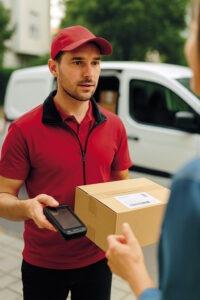
Next-day delivery (D+1) is now the industry minimum, while order deadlines are being pushed back
New vehicles in the fleet
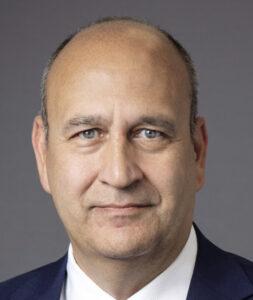
Dr. Miklós Springer
deputy CEO of logistics
Hungarian Post
Hungarian Post uses dynamic route planning to ensure reliable and fast service, which significantly shortens delivery times. New vehicles have been purchased to rejuvenate the fleet and by this further increase delivery efficiency and reliability. The company’s electric vehicle fleet covers a wide range of delivery vehicles, from electric bicycles and special electric mopeds to N1 category electric motor vehicles.
“This year we introduced the option of customer instructions, which makes delivery more flexible: customers can more easily change the location and time of delivery”,
explains Dr Miklós Springer, deputy CEO of logistics at Hungarian Post Zrt.
According to data from NMHH, the FoxPost-Packeta group has the largest parcel locker network in Hungary; the efficiency resulting from its size and Packeta’s international background provide a stable foundation for innovation. Their latest development is the introduction of two deliveries a day at busier locations: parcel lockers are filled and emptied twice a day by couriers.

Zoltán Radeczky
managing director
Foxpost and Packeta
Hungary
“Parcel lockers is currently the most optimal small parcel logistics solution available: with a locker we can deliver orders of much more parcels in a single trip than with home delivery, and this isn’t only more efficient but also more environmentally friendly”,
underlines Zoltán Radeczky, managing director of FoxPost Kft. and Packeta Hungary Kft.
Global expansion
Nowadays it is a basic expectation that everyone should be able to choose the delivery method that is most convenient for them. At the same time it is increasingly important for customers to be able to make changes even during delivery if their original plans change – for example, requesting a different delivery date or redirecting the package to a pick-up point.

Attila Balázs
managing director
GLS Hungary
“We have developed our wide range of services in response to these changing expectations: our goal is to ensure that everyone can find the right solution, changing the delivery process on the go, even through the GLS app”,
we learn from Attila Balázs, managing director of GLS Hungary.

László Varga
sales and marketing
director
DPD Hungary
For DPD the biggest challenge is the rapid change on the market and adapting to new customer habits, which they are addressing through technological developments and network expansion. The myDPD app gives recipients the opportunity to track parcels, receive notifications and modify deliveries.
“We offer a variety of delivery solutions: home delivery with a 1-hour time window, parcel point or parcel locker pickup, secure delivery, and international shipping within the Geopost network”,
notes László Varga, sales and marketing director of DPD Hungary Kft.
As part of the Geopost international network, the company is expanding into new regions.
International experience
The DHL network can rely on the experience of more than 220 countries and territories, giving the company first-hand insight into trends on more developed e-commerce markets.

Gábor Molnár
business development
manager
DHL Supply Chain
Magyarország
“We invest a lot in digital and sustainable solutions and optimise our network year after year, working with our customers to develop customised supply chain services”,
informs Gábor Molnár, business development manager at DHL Supply Chain Magyarország Kft.

László Bory
head of sales and
marketing
DHL Express Magyarország
“DHL is a B2B-focused company, but 50% of the parcels we move in our global network are B2C; accordingly, we have expanded our services to include on-demand delivery”,
adds László Bory, head of sales and marketing at DHL Express Magyarország Kft.

Péter Garay
managing director
foodora
Foodora’s delivery fleet has been growing steadily for years, in line with the number of orders, and currently includes 5,000 active couriers.
“We are responding to the high inflation situation with great schemes: the monthly fee for the foodora PRO subscription programme pays for itself after just two orders, and in addition to free delivery customers can also take advantage of 30% discounts at nearly 1,500 partners”,
reports Péter Garay, managing director of foodora.
At foodora live order tracking is possible: users can see exactly where their delivery partner is and how many minutes they will take to arrive. The company’s most important task is to connect the three players in their ecosystem: restaurants/shops, delivery partners and customers – in the most efficient way possible.
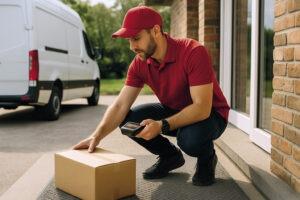
Beyond accuracy, consumers also expect the entire process to be transparent and convenient
Multichannel delivery

Csaba Árvai
managing director
Boxy
Urban traffic restrictions, access rules and green zones are becoming increasingly difficult obstacles that elevate delivery costs. Plus there aren’t enough couriers, warehouse and administrative workers, while inflation and fuel prices continue to weigh on costs. During peak seasons parcel locker capacity can become a bottleneck. By 2025 Boxy has developed a comprehensive logistics and delivery service that is fast, flexible and cost-effective. The company’s solutions support all their customers, from manufacturers and wholesalers to small and large online stores, covering everything from warehouse logistics and freight forwarding to van and truck transport.
“In our 22,000m² central warehouse – designed for fulfilment and traditional warehouse technologies – we work every day to allocate resources efficiently, back operations with technology and fulfil every order accurately and on time”,
comments Csaba Árvai, managing director of Boxy Logisztikai Zrt.
At Boxy digitalisation and automation form the basis of operations: one of the main pillars of this is the partner portal, where customers can track stock movements, order processing status, the moment of handover to the courier and delivery statuses in real time.
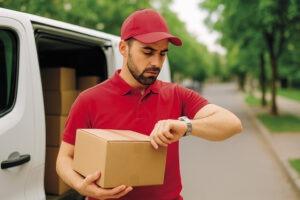
In meeting sustainability expectations, providers must reduce emissions without compromising service levels—this requires fine-tuned optimization of both networks and equipment
Hybrid models

Attila Hornyák-Sebestyén
chief operating officer
Sameday Magyarország
Sameday prioritises agile workforce management, higher-capacity automatic parcel sorting equipment, and the installation and relocation of parcel lockers. The company has fully digitalised the freight transport process, from package recording to delivery to the recipient, and automated parcel processing.
“Our couriers use PDA devices to pick up and deliver packages, recipients can see and manage their parcel in our app, and automatic sorting equipment at the distribution centre helps us work quickly and accurately”,
explains Attila Hornyák-Sebestyén, chief operating officer of Sameday Hungary.

Gergely Ódor
managing director
OGL Group
OGL is a smaller player on the market and this service isn’t the main profile of the company.
“We use a corporate management system, tracking and well-chosen transport vehicles to develop the most ideal delivery methods for customer needs”,
says Gergely Ódor, managing director of the OGL Group.
He believes that technological investments are possible in the areas of digitalisation and automation; the introduction of AI and robotics aims to reduce human resource needs..
What price does the environment pay for our comfort?
Carbon.Crane, the first ISO-compliant Hungarian start-up specialising in digital carbon footprint measurement and reduction measured the carbon footprints of sixteen domestic online shop’s websites.
The websites were measured using a new browser extension developed by the company: in addition to measuring, the application also shows what options are available on a given site for optimising carbon emissions from a user or programmer perspective. During the study they followed the main steps of an average purchase.
The results speak for themselves: while testing the websites, they generated as much CO2e emission (233,943 kg CO2e) as nearly a million washing machines or 732 trips by car from Budapest to Paris. The average reduction potential is 19.8%; if retailers optimised their websites, the energy saved would cover the annual electricity consumption of 78 households. “It is important to note that the data we measured in grams accurately reflects energy consumption and water use too, as well as loading times, which have become increasingly important recently”, underlined György Huszics, co-founder of Carbon.Crane.
Related news
Foodora expands: it brought fast delivery to 21 new cities this year
🎧 Hallgasd a cikket: Lejátszás Szünet Folytatás Leállítás Nyelv: Auto…
Read more >One hundred thousand smiles in ten years – The 10th Christmas SmileElves campaign has ended
🎧 Hallgasd a cikket: Lejátszás Szünet Folytatás Leállítás Nyelv: Auto…
Read more >DPD Hungary Kft.: Official statement regarding year-end delivery delays
🎧 Hallgasd a cikket: Lejátszás Szünet Folytatás Leállítás Nyelv: Auto…
Read more >Related news
Christmas shock in commerce: for the first time, we can pay with bank cards in fewer places
🎧 Hallgasd a cikket: Lejátszás Szünet Folytatás Leállítás Nyelv: Auto…
Read more >Hungarian Confectionery Manufacturers Association: trends in 2025 and prospects for 2026
🎧 Hallgasd a cikket: Lejátszás Szünet Folytatás Leállítás Nyelv: Auto…
Read more >Most grocery chains will be open until noon on December 24th
🎧 Hallgasd a cikket: Lejátszás Szünet Folytatás Leállítás Nyelv: Auto…
Read more >
